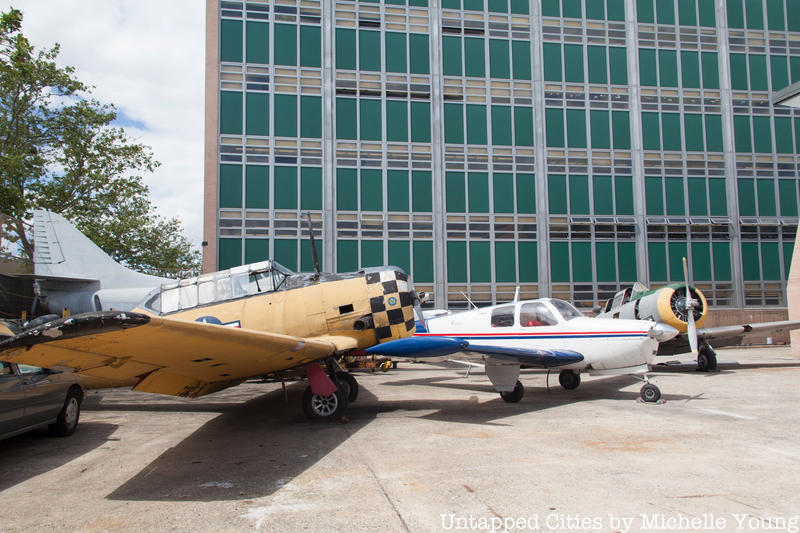7. New York City’s only aviation school is located along Queens Boulevard

To most, the World War II-era bombers that sit at the intersection of Queens Boulevard and 36th Street represent a bygone era. For students at the Aviation Career & Technical Education High School, they serve as an integral part of their daily routine. Formerly known as the Manhattan School of Aviation Trades, Aviation High School began operations in 1925 as part of the Central Building Trades School in Manhattan. At the time, only three teachers taught four-hour blocks of building trades, such as woodworking and plumbing.
During the 1930s, a four-year aviation curriculum was developed, including airplane mechanics, engine mechanics, aerodynamics, navigation, and radio theory. In 1949, the school received a Civil Aeronautics Association (now the Federal Aviation Administration) certification and officially became the largest all-aviation high school in the country. A few years later in 1958, Aviation High School moved to its current location, created at a cost of $9 million. The school’s design features a 10,000-square-foot hangar and 15,000-square-foot apron used by senior students to perform maintenance work on retired aircraft, a test cell for Powerplant students, and a seven-story building equipped with academic classrooms and specialized aviation maintenance labs.
Though Aviation High School’s city location might seem unusual, both Queens and Long Island have a rich history with aviation. Following World War II, aviation became a booming business for the area. Serving an average of 2,000 students, Aviation High School remains one of the nation’s most prestigious aviation schools, having earned seven straight “A” ratings from the New York City Department of Education as of 2011. Today, the school focuses on preparing students for careers in aviation maintenance and the aerospace industry. Notable alumni include Greg Boyer, former men’s national water polo team member and 1998 Summer Olympics silver medalist, baseball pitcher Whitey Ford, and Frank Gustave Zarb, chairman of the NASDAQ stock exchange during the dot-com boom of the late 1990s.





